Using Zotero to Manage Research Sources-Part 3
Notes, Tags, and Related Sources
A very useful feature of Zotero is its ability to allow users to store Notes concerning a particular source, to Tag the source with keywords, and to link the source to Related sources. This is done from the same interface as the Add Citation feature. Using this feature, you can store all your citations—for all your projects—in one place, and organize / filter them by their Tags / Keywords. To add this extra information, simply click the tab at the top of the Item Info / Item Entry menu (where you just added your item). Clicking "Add" under the relevant tabs will enable users to add the note, tag, or related source.
The Notes tab opens a text editor that enables you to write notes on a source. The Tags tab enables you to add searchable keywords (as many as are relevant, such as project names or overall topics), and the Related tab enables you to link together records / citations you have entered.
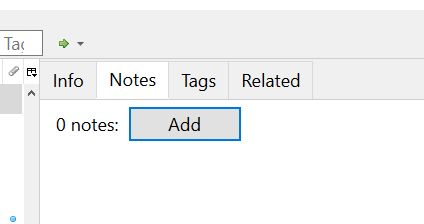
Zotero Bibliographies
Once you have built a Zotero library, either through hand-entry of your citations or via importing them from some other software like ProCite or Endnote, you can easily use your Zotero entries to create bibliographies / Works Cited pages and, via a plug-in for Word, in-text citations. These bibliographies can be formatted in one of many citation formats, such as APA, MLA, or Chicago.
Creating a bibliography is as simple as selecting sources from the center Zotero panel and right clicking; this will bring up a context menu that allows users to export a bibliography in various formats.
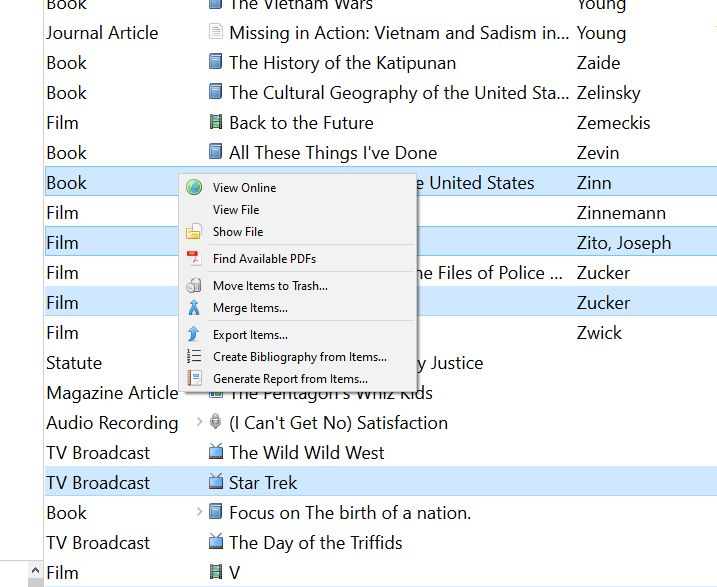
The bibliography can be formatted in a number of available formats.

Other Features of Zotero Not Covered Here
- For Zotero Technical Support, Visit: http://www.zotero.org/support/
- Zotero Syncing: Using a Zotero account, you can sync your library with Zotero.org’s servers, and access it from any internet-connected computer on which Zotero is installed.
- Word Processor Integration: Using the Word or OpenOffice plugin for Zotero, you can automatically generate bibliographies and in-text citations.
- Web Screenshots. You can automatically create a Zotero entry from Zotero-compliant web pages, with a single click.
- You can attach PDF or other files to your Zotero citations.
Using Zotero to Manage Research Sources-Part 1
What is Zotero?
Zotero (Zoh-TAIR-oh) is a free citation manager that helps you to store, collect, manage, and cite your research sources. This program is similar to software packages like ProCite and Endnote, but it is completely free. Zotero has functionality such as:
- Source database / library: collect key information about numerous types of research sources in an easy-to-manage format.
- Annotation, tagging, and storage of sources;
- Storage of PDF articles;
- Generation of bibliographies in numerous citation formats.
How do I get it?
The full version of Zotero is available as a standalone application at http://www.zotero.org. It runs on Windows, Mac, and Linux operating systems.
For users who only need to generate individual source citations, ZoteroBib is available at https://zbib.org/; this site works similarly to CitationMachine or Noodlebib.
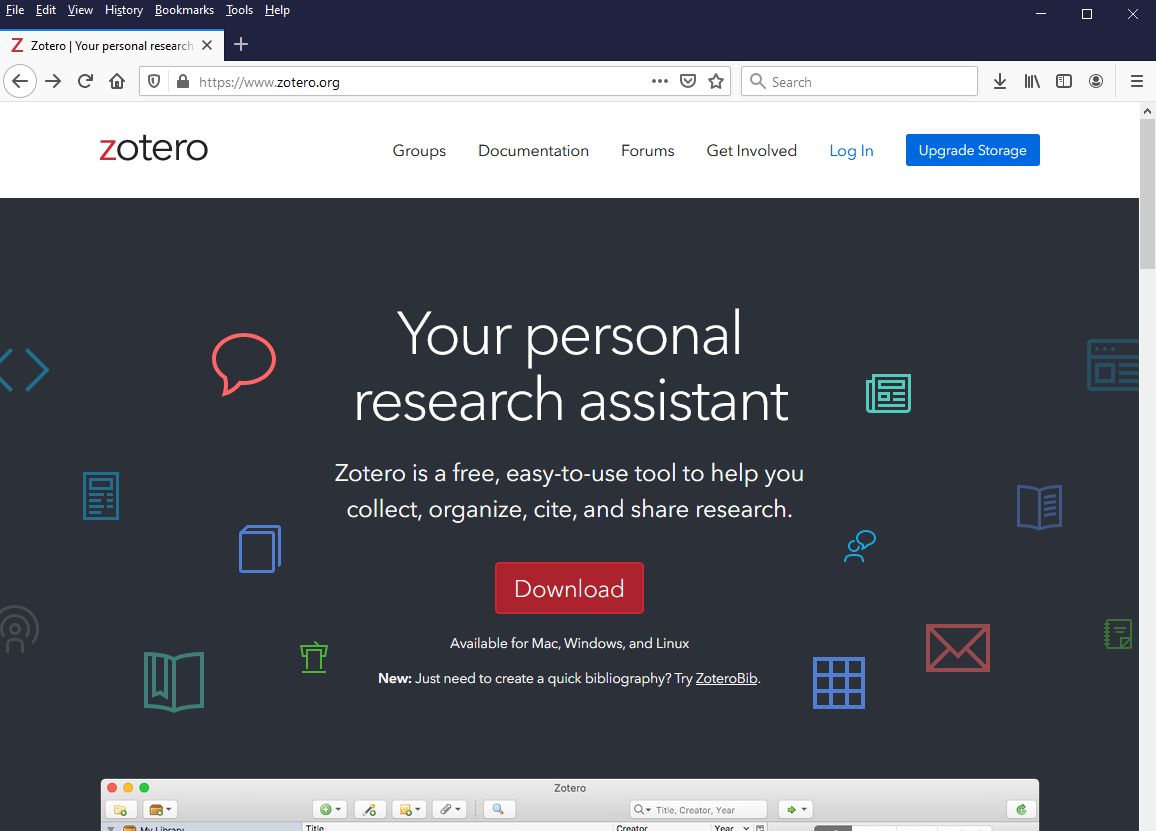
You can start the download process by clicking on the blue download button.
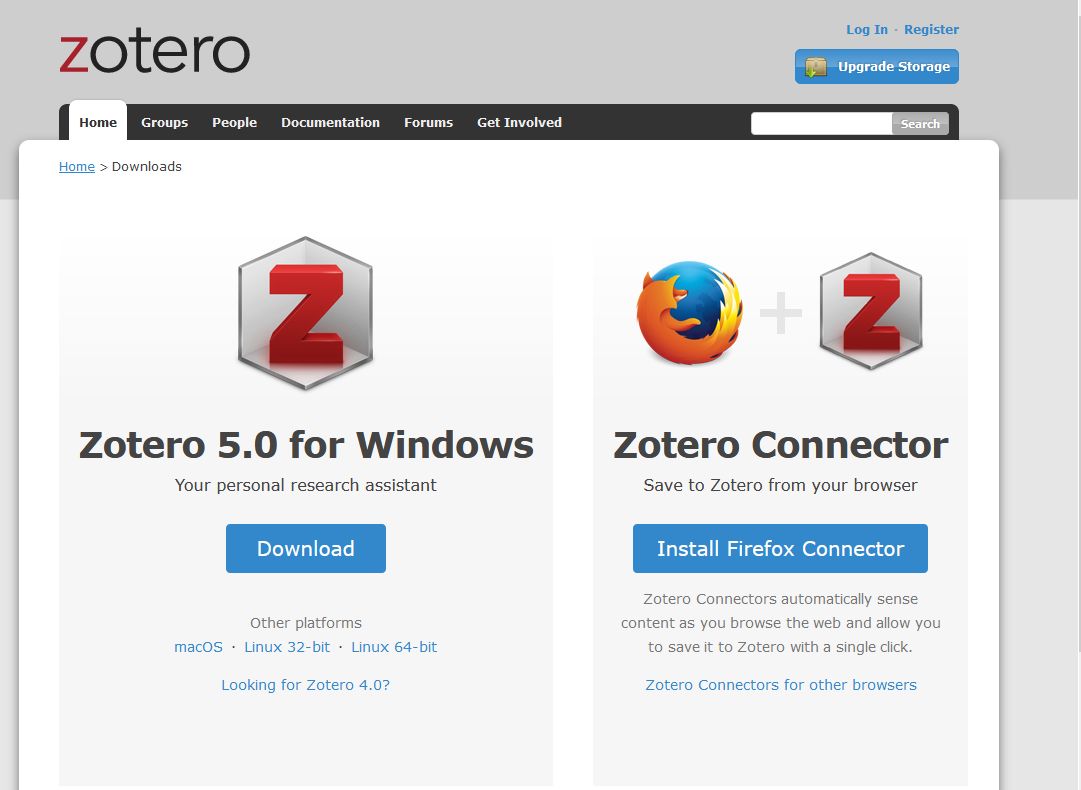
Clicking on the Download icon will bring up the option to save the installation file.
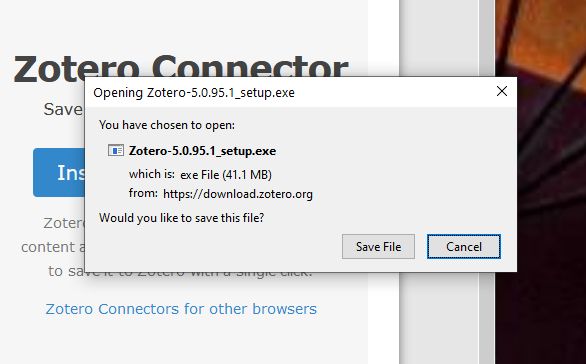
Crafting Effective Writing Assignments: The CORE Principles
A Resource for Faculty
Writing assignments are often an integral part of the learning experience. Effective writing tasks often both develop and assess students analytical and communications skills, encouraging them to both recall and apply what they have learned in a given course in a rigorous way.
Many faculty, especially in disciplines outside the humanities, often struggle to design assignments and writing experiences that are beneficial and appropriate for their students; the result is often unsatisfactory writing that does not meet the needs of either student or faculty member.
This guide is meant as a step toward addressing this issue, exposing faculty to some essential principles of writing assignment design that will help them offer assignments that advance the goals and desired outcomes of each course.
Overview: The CORE Principles
Creating effective writing assignments requires an instructor to be aware of four key overriding principles. We can remember these using the acronym CORE.
- Establish CLEAR expectations and standards.
- Keep in mind the OUTCOMES that you want from the assignment.
- Build REVISION into the process.
- Provide EXAMPLES of good writing for your students to model.
Principle 1: Establish CLEAR expectations and standards for the writing assignment, and communicate those standards to the students in writing.
Students often struggle with understanding exactly what an instructor expects from a writing assignment, as well as with comprehending the specific criteria under which their work will be evaluated.
- Provide a detailed assignment sheet for the writing project. At minimum, the sheet should outline the following:
- Due Date and Time. Set a specific date for the paper to be submitted, down to the time. This gives students a concrete target for turning in their work.
- Method of Submission. Establish the method by which the student should turn in the piece. Hard copy, to the instructor? Via email, to a dedicated address? Through BlackBoard / Turnitin?
- Expected Length for the Assignment. Giving a specific target for how long the assignment should be is helpful in establishing the scope and required depth of the assignment. Providing a required word count rather than a page length avoids issues with varying margins, font sizes, etc.
- Required Style Guide / Document / Citation format. Outline expectations for formatting, documentation, and style (MLA, APA, Chicago)
- Penalties. Note, specifically, reductions in grade that are incurred via deviating from formatting, length, submission, and documentation standards. Outline penalties for late submission (or refer to syllabus / standard lateness policies).
- A detailed description of the writing task itself, including overall content requirements and analytical tasks specific to the course outcomes.
Sample Assignment Sheet
Assignment 1: Expository Essay
Due Date: Sunday, Feb 24th @ 11.59PM (Upload to BlackBoard Assignments)
Outline Due: Wednesday, Feb 13th @ 11.59PM (Upload to BlackBoard Assignments)
MLA Document Format Required (-1 letter for deviation)
1,250 (-1 letter reduction for word count).
Audience: Fellow 1st Year Students
For this assignment, you will construct an expository essay on the following topic. An expository essay is an essay that investigates an idea and develops a coherent perspective for a given audience using a clear thesis and supporting evidence and details.
Your essay must have a well-defined central idea, clearly and directly address a specific audience, be coherently developed with relevant details, and follow the conventions of Standard English Grammar. In addition to Chapter 03.2, Chapter 5.1, “Generating Ideas,” Chapter 5.2, “Organizing a Writing Plan,” and Chapter 5.3.1, “Thesis Statements” will be particularly helpful.
The Assignment:
Your assignment in this expository essay will be to explore and investigate key aspects of your educational experiences and draw conclusions about their significance. To do this, you will complete ONE of the following options:
- Discuss several people who have had the most influence upon your education up to this point. Describe who each person is, your relation to them, and what impact they had on your education. Did they motivate you? Provide assistance or help in key moment? Conversely, did they challenge you? Present an obstacle for you to overcome?
- Discuss the most significant accomplishments you have had in your education thus far. These can be projects that you completed, obstacles you overcame, honors you attained, or important lessons that you learned.
- [MORE DIFFICULT] Choose three words that characterize several of your key educational experiences in high school or college. In this version of the assignment, your task will be to connect these words—such as “happy” or “challenging” or “frustrating” or “boring” or “exciting”—with key events in your education. The challenge of this version of the assignment is to use the words that you’ve chosen as controlling ideas for discussing a narrow and specific set of key experiences. If, for example, you choose “confusing,” “exciting,” and “frustrating,” you will then choose three experiences that correspond with those terms to develop your paper. You might discuss your “confusing” experience in 10th grade chemistry, your “exciting” internship at Johns Hopkins hospital, and your “frustrating” attempts to coordinate a group project in your senior year world-history class.
Basic Assignment Requirements
The Narrative essay must meet the following format guidelines:
- Be in MLA Manuscript Format
- Have 1 inch top, bottom, right and left margins;
- Times New Roman 12 font;
- Running header with last name and page number;
- MLA compliant title block on first page;
- All content double spaced.
The Expository essay must meet the following content and mechanics guidelines:
- Must be at least 1,250 words long;
- Must be guided by a clearly identified thesis statement that articulates the primary points of discussion;
- Must be organized logically with clear topic sentences that connect back to the thesis statement;
- Must provide adequate levels of detail and description to depict the event using the Methods of Development that we discuss in class:
- Narration
- Description
- Exposition
- Exemplification;
- Must contain a clear introduction, body, and conclusion that discuss the event and establish its importance to the audience;
- Must contain none of the following major mechanical errors:
- Run-on sentences
- Fragments
- Tense shifts
- Possession errors
- Capitalization errors
- Subject-verb agreement errors
- Must conform to Standard English Grammar requirements for proofreading, usage, and spelling.
- Provide a rubric for the assignment that delineates the content and formal areas of assessment, and the scale of assessment for each, ranging from Failing (F) to Outstanding (A).
- Rubric can be either quantitative, which translates directly to a numeric grade, or qualitative, which does not, assessing strengths and weaknesses non-numerically.
- Attach the rubric to the assignment sheet, and go over it with the students ahead of time.
- Rubrics can be very specific to assignments or rather general, applicable to many types of assignments.
- Rubrics should be consistent with the University System of Maryland’s Standards for a C Paper.
- An example rubric is below. This is the qualitative rubric that is used in English 101 and English 102 classes. It is broad enough to be applicable to a wide variety of argumentative, analytical, and informative writing tasks.
Sample Assignment Rubric
|
Content Indicators |
Failing (F Grade)
|
Below Average (D Grade)
|
Average (C Grade)
|
Above Average (B Grade)
|
Excellent (A Grade)
|
|
Thesis |
Essay is off-assignment or presents a very unclear or unidentifiable thesis. |
The thesis may be unclear; often the thesis cannot be discerned without significant work on the part of the reader. |
The essay presents an appropriate thesis, but that thesis may be too broad or the audience might, for some reason, have trouble immediately identifying the thesis. |
The writing presents a clearly identifiable thesis that is appropriate to the writing task in scope, focus, and direction. |
The paper has a clear and compelling thesis statement that may be a novel or original approach to the problem. |
|
Audience & Purpose |
The essay demonstrates no discernible sense of purpose, unclear or problematic sense of the audience of the piece. |
The essay has a poor sense of its audience and its values, and a limited sense of purpose. The topic may be banal or the approach to it superficial. |
The writing illustrates an appropriate if unsophisticated sense of its audience and purpose; the writer’s topic and approach to it are appropriate for college-level writing. |
The essay accommodates itself well to its intended audience, and has suggests a clear sense of purpose. There might be awareness or consideration of other points of view. |
There is a clear and sustained sense of audience and purpose; the language and approach are effective in accommodating that audience, and the author displays an awareness and understanding of other points of view. |
|
Organization |
The essay is not organized logically, or has problems with essay- or paragraph-level coherence |
The essay suffers from a counter-intuitive or confusing organizational scheme; paragraphs are misplaced or would be far more effective in other places. |
The paper is adequately organized and developed; the transitions between logical elements of the paper is in general clear. Some elements may be out of place or more effective elsewhere, but the overall scheme of the paper is acceptable. |
The paper is generally well-organized. Each section flows naturally and intuitively from one to the next, and logical transitions are in general clear. |
The paper is well-organized and coherently developed; each element of the paper is logically connected to the larger aim of the work. |
|
Detail & Development
|
The work presents few or no relevant details to support its assertions, or presents evidence that is difficult to understand or inappropriate in some way.
What information used from external sources is cited incorrectly or in inappropriate style. |
The essay in general lacks supportive relevant details. There is inadequate explanation or illustration of key ideas; irrelevant information may instead be present; the reasoning will necessarily be flawed.
The paper has made an attempt to use or cite information from external sources, but the problems in the selection or appropriateness of the evidence renders this problematic in some way. |
The paper explains or illustrates some of its key ideas with appropriate descriptions, analysis or other evidence, but may feature flaws in evidence or reasoning; any awareness of other points of view is limited.
Evidence from external sources is cited with an assignment-appropriate citation style, though there may be minor mistakes in formatting citations. |
The B-level work clearly explains or illustrates key ideas, using concrete details, description, or other appropriate evidence in a compelling and affecting manner. Some evidence may be obvious or problematic in some way, but the writer does not consistently settle for the obvious.
Evidence from external sources is cited with an assignment-appropriate citation style, though there may be isolated minor mistakes in formatting citations. |
The paper clearly and consistently explains or illustrates key ideas, using concrete details, description, or other appropriate evidence. The use or selection of evidence may be novel or original in some way.
Evidence from external sources is correctly cited with an assignment-appropriate citation style. |
|
Introduction & Conclusion |
Introduction or conclusion may be missing in the F essay, or they might be ineffective in generating a sense of importance for the topic. |
The work may present an unclear or ineffective introduction and / or conclusion (one of these elements may even be missing) that fails to establish (or re-establish) a sense of importance and relevance for the audience. |
The essay presents an appropriate introduction and conclusion that establishes a sense of importance and relevance for the topic for the selected audience. These elements may be flawed or not as effective as they might be. |
The introduction and conclusion are clear and appropriate to the writing task, though they might not be as forceful or exciting as they could be. |
The paper has a strong introduction and conclusion that clearly lay out the purpose and importance of the paper’s topic. |
|
Mechanics and Grammar The paper’s effectiveness in the use of language. |
The writing is plagued by serious and repeated errors in mechanics and grammar that distract from the writer’s meaning and clarity. F essays are often characterized by at least two repeated major errors, three instances of different major errors, or an accumulation of many minor errors. |
The essay illustrates a pattern of major and minor errors in grammar, mechanics, or usage that distracts from or obscures the writer’s intended meaning . Word choice or diction may be limited or inappropriate for the writing task. Often, these essays contain one repeated major error or two instances of different major errors, and accumulation of minor errors. |
The C essay demonstrates adequate facility with language; while the prose adheres to the constraints of Standard English Grammar, syntactic variety, subordination, and other sophisticated elements of sentence structure may be lacking; the essay may be written in a “wooden” style. The essay may display some errors in mechanics, usage, and sentence structure but does not display a consistent pattern of such errors, nor is the writer’s intended meaning obscured by their presence.
The prose, while competent, may lack a sense of the author’s voice. |
The writing in this paper displays above-average competency in the use of language, using correct sentence structure, subordination, emphasis, sentence length and other syntactic variations are present. There are no major sentence errors, such as run-ons or fragments, present.
The prose is generally free from errors in mechanics and usage; punctuation, grammar, and spelling are consistent with the standards of Standard English Grammar.
The paper has a noticeable sense of the writer’s voice. |
The writing evinces exceptional facility in the use of language; the prose is clear, coherent, and even occasionally memorable. The paper is is generally free from errors in mechanics, usage, and sentence structure; what few errors there are do not undermine the overall effectiveness of the paper
The writer has evoked a clear and distinctive voice in the paper. |
Principle 2: Keep in mind the OUTCOMES that you want from the assignment, and what students should get by completing it.
Attempt to design a writing task that contributes to the overall desired outcomes for your course and program.
- As the instructor, your task is to build a writing assignment that fits with the goals of your course. Thinking critically about which competency each writing task builds for your students is a key part of this. Is the skill you want to develop a research-based skill? Argumentation? Recall of information? Critical analysis & synthesis of opposing perspectives? Clear reporting of research results? Drawing inferences and lessons learned from a case study? Designing and developing a plan of action in response to a problem?
- Work backwards from the goal as you design. Start with the desired skill outcome, and consider what kind of work products / writing artifacts would develop or demonstrate those skills.
- One or more of the University Student Learning Outcomes nearly always inform worthwhile writing projects; these are helpful to keep in mind when designing your assignments:
- Oral and Written Communication
- Analytical Reasoning
- Informational Literacy
- Social Awareness
- Reflective Practice
- Responsive Citizenship
- Work with colleagues, other instructors, and Writing Center staff to analyze the expected outcomes of your writing tasks. Examining past assignments and those given by other instructors
Principle 3: Build REVISION into the process. Envision the writing assignment as a multi-step process that involves planning, drafting, feedback, and revision.
It is key to enable your students to improve their writing based on your feedback. Offering meaningful compositional and formal comments on the writing assignment, and giving the students the opportunity to rewrite addressing those concerns will assist students in two key developmental areas:
- seeing writing and communication as a process of repeatable steps that can be applied in many situations
- envisioning writing as a skill that can be developed over time, rather than an inborn talent that only some people are good at.
Meaningful feedback to the student involves commenting on both content and form / language throughout the paper.
Comments on content can address the following, either as a strength or weakness:
- Thesis / overall idea or conceit of the paper.
- Audience & Purpose of the paper; how well it works with its intended readers and how it achieves its goals.
- Organization: how effective the paper- and paragraph-level organization is; does the progress and placement of ideas make sense?
- Detail, Evidence, Reasoning: Does the paper contain enough and specific information / data to make its claims clear? Does the paper draw appropriate and logical conclusions based on the information contained therein?
- Introduction & Conclusion: Does the paper begin and end in a coherent way? Does it establish its purpose and the relevance of its topic?
Comments on form and language can address the following, either a strength or a weakness:
- Appropriateness of language choices: does the paper express its ideas in a language appropriate to the rhetorical situation? For formal assignments, does the paper use formal language? Does it use vocabulary and diction that fits the situation?
- Sentence structure: are the sentences clear and effective?
- Proofreading and spelling: does the paper follow proofing and spelling conventions appropriate for the rhetorical situation? Does the paper contain missing words or misspellings that distract from the paper’s meaning?
Aiming for at least one substantial comment per page—a phrase or sentence on a content area, a leading question, a counterpoint—will help provide students with a basis for revising their work.
Showing even brief visitations in most paragraphs throughout the paper, even with just a simple comment (strong idea! Need more development here; I don’t understand; reword this passage; lots of mechanical issues here, you should see the Writing Center for help) demonstrates that the instructor is invested in the paper and in the students’ success.
It is often effective to offer students a set timeline—10 calendar days, for example—after their graded work is returned to them to revise their work independently, in consultation with the instructor or the Writing Center. The students can then resubmit the work for a second round of evaluation. Commenting can be much lighter on the 2nd round, as the instructor has already seen the work.
Sample Feedback to Students:
Principle 4: Provide EXAMPLES of good writing for your students to emulate. Students can understand the conventions, forms, and other aspects of writing projects by seeing them in practice.
Students of all levels at times struggle to conceptualize what a good piece of writing looks and sounds like—how it’s organized, the evidence provided, the structure, the format. Having students see an executed piece of writing that fulfills the expectations of a particular assignment gives students a concrete target toward which to work. This translates the standards of the assignment rubric into something with which a student can more actively engage.
For many students, seeing both professional published work and effective student work is a way to build understanding of effective writing practice.
Maintaining (and sharing among colleagues and instructors) an archive of good examples of writing—past student work, accessible professional examples, outline and process work, will lead to students achieving at a higher level.
